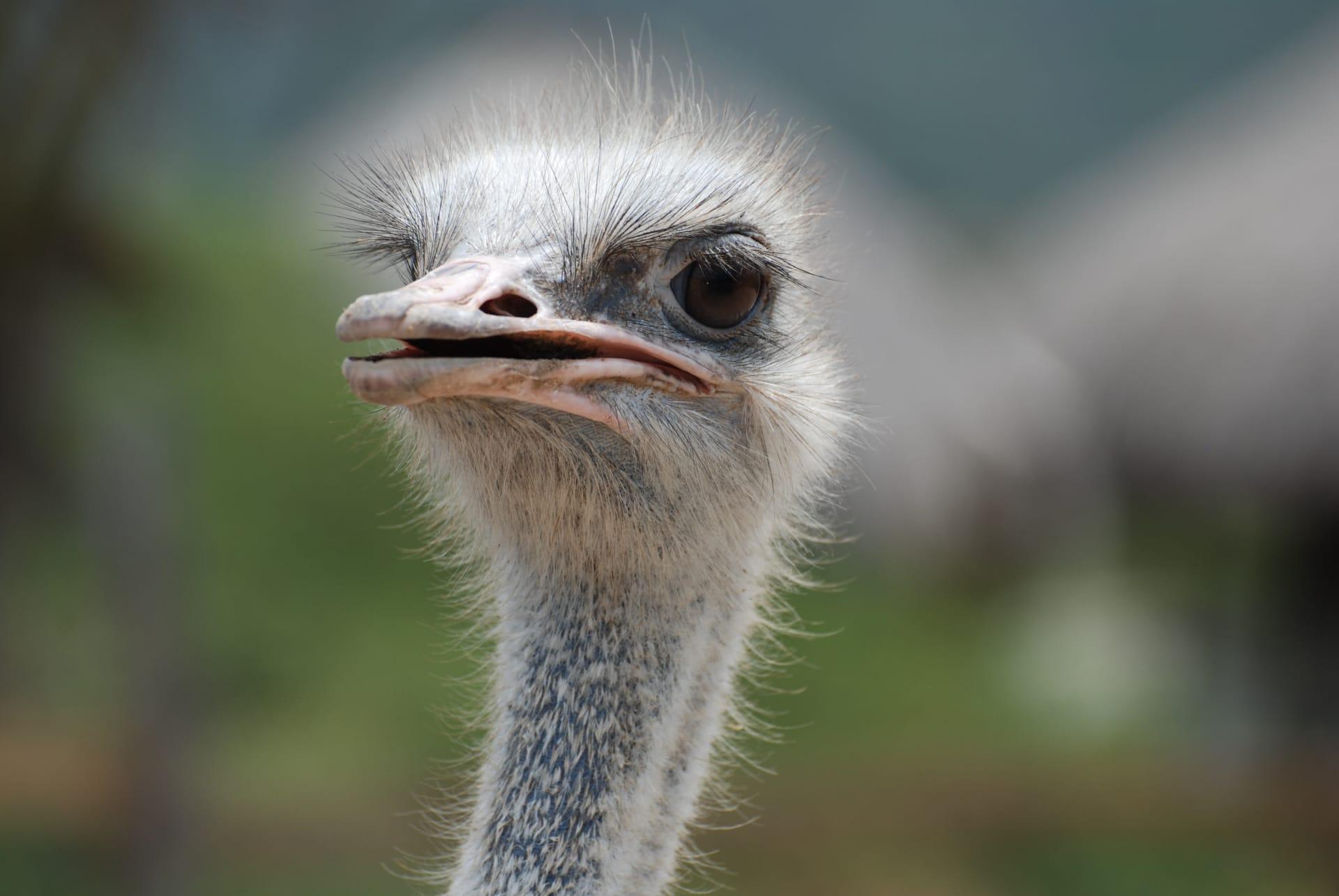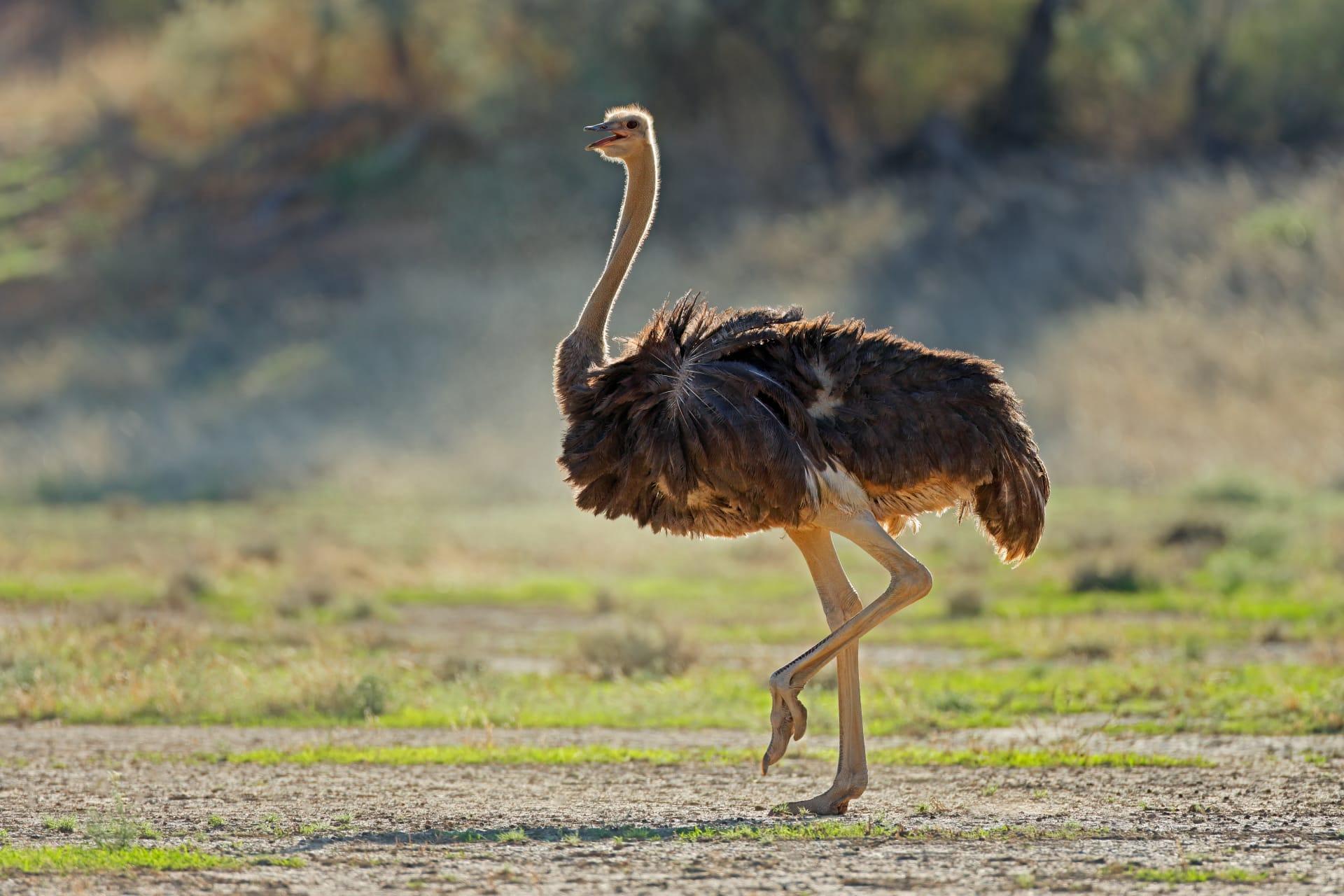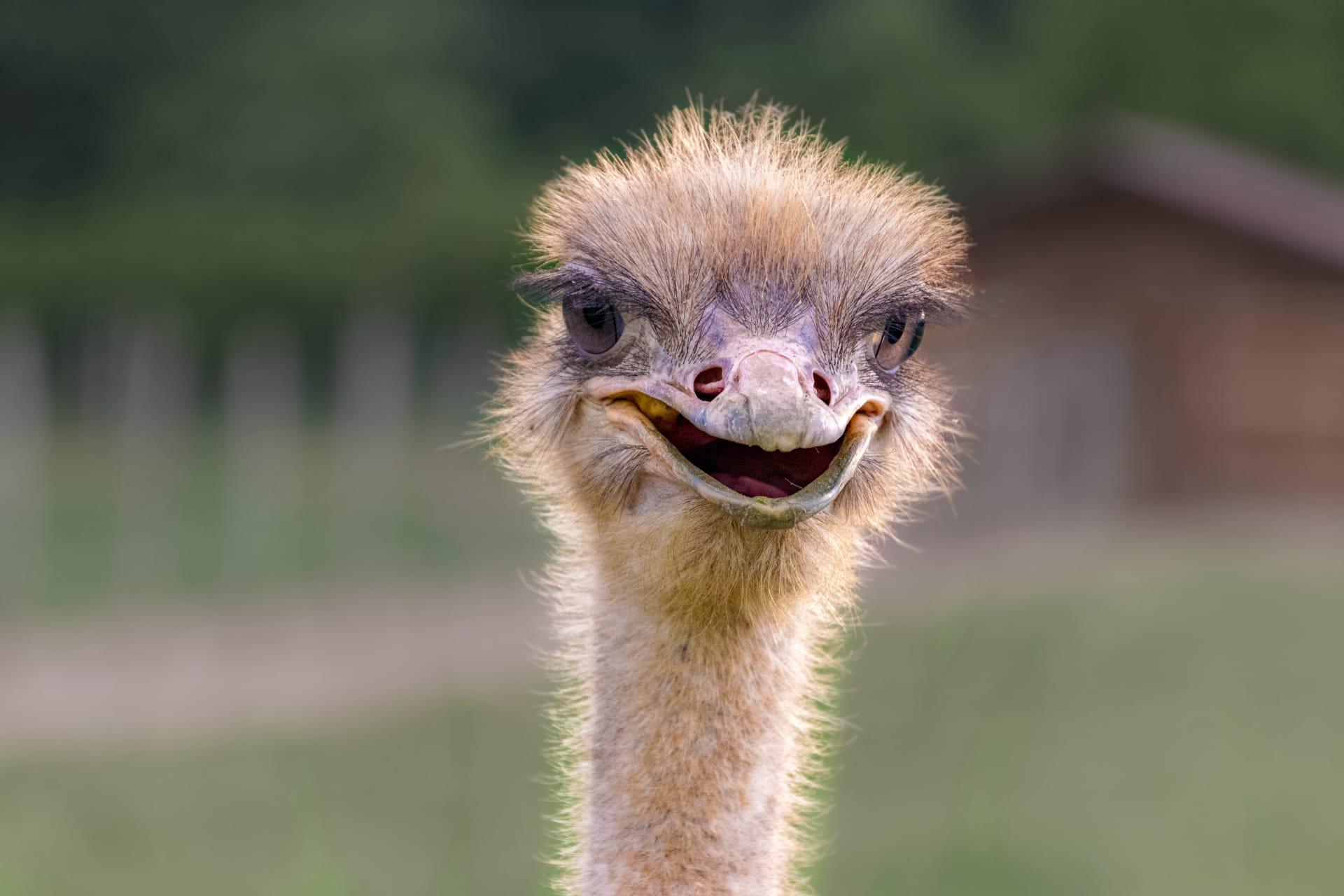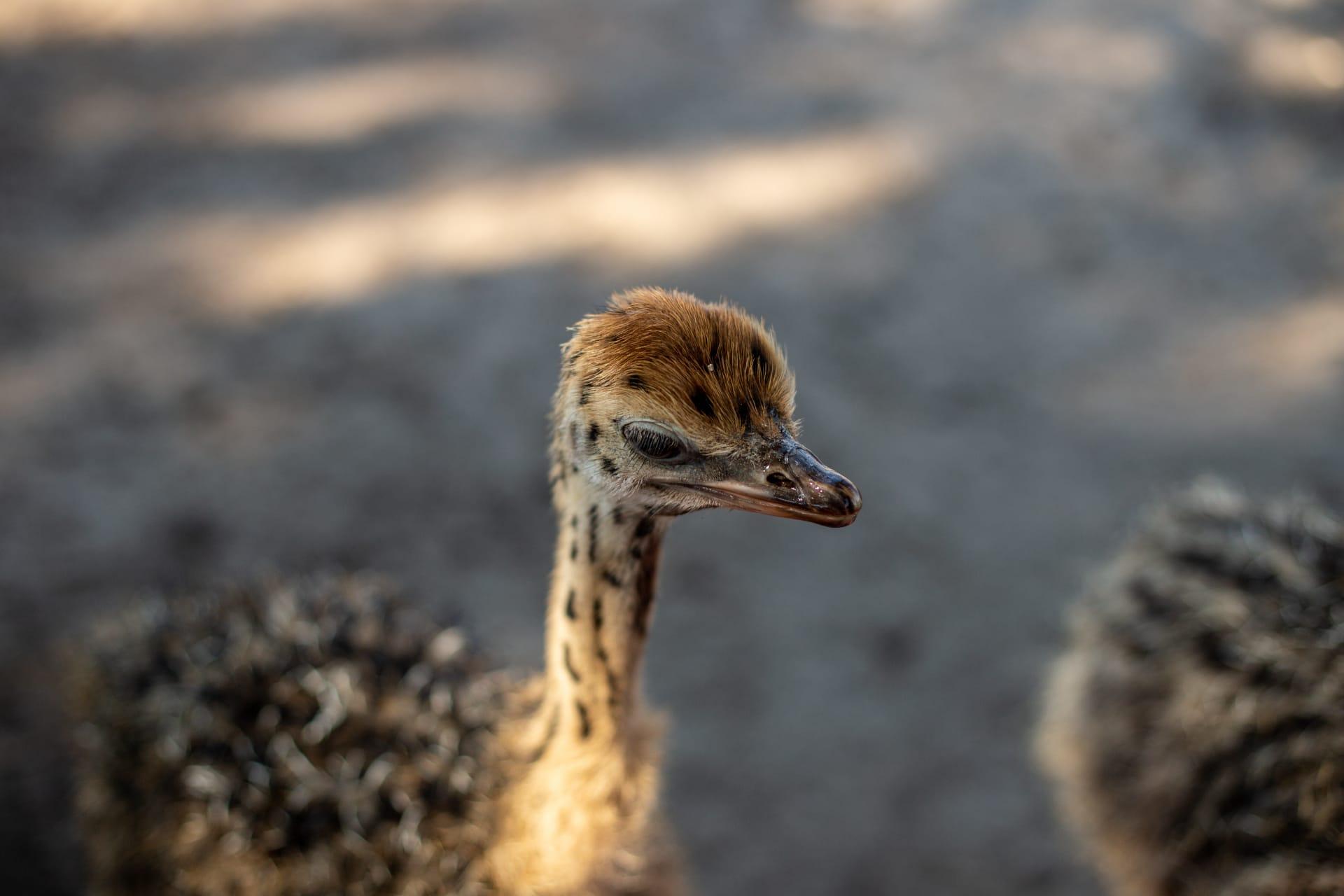Ostrich Trivia
- Home /
- Trivia Question /
- Animal /
- Ostrich Trivia
1
Question: How fast can an ostrich run, and what makes them so speedy?
Answer: Ostriches are the world's fastest two-legged animals, reaching speeds up to 45 miles per hour (about 72 kilometers per hour). This incredible speed is due to their long, powerful legs, which can cover 10 to 16 feet (3 to 5 meters) in a single stride. Additionally, their unique two-toed foot structure, with one toe significantly larger than the other, aids in balance and agility during high-speed chases.
Question: What's the size and weight of an adult ostrich, and how does it affect their lifestyle?
Answer: Adult ostriches can stand 7 to 9 feet tall (about 2.1 to 2.7 meters) and weigh between 220 to 350 pounds (100 to 160 kilograms). Their size makes them the largest birds on Earth. Despite their heavy weight, they are excellent runners and use their long legs and strong muscles to escape predators. Their size also assists in regulating their body temperature in their hot savannah habitat.

2
Question: Do ostriches really bury their heads in the sand when frightened?
Answer: Contrary to popular belief, ostriches do not bury their heads in the sand when scared. This myth likely originated from observing ostriches lowering their heads to the ground to eat or when lying down to avoid predators. In reality, ostriches are quite vigilant and would rather flee or aggressively defend themselves with strong kicks.
Question: Is it true that ostriches can't fly? Why is that the case?
Answer: Yes, ostriches are flightless birds. They evolved to run rather than fly. Their large body size and weight make it impossible for them to achieve flight. Instead, they have strong, muscular legs adapted for running and long, powerful wings used for balance and courtship displays, rather than for flying.

3
Question: What do ostriches eat, and how does their diet affect their habitat?
Answer: Ostriches are omnivores, eating a mix of plants, seeds, insects, and small vertebrates. They favor areas with diverse vegetation to support their varied diet. Ostriches are also known to eat pebbles and small stones, which help grind up food in their gizzard, an essential part of their digestive system.
Question: How long do ostriches live, and what factors influence their lifespan?
Answer: Ostriches can live for 30 to 40 years in the wild, and sometimes even longer in captivity. Their lifespan is influenced by factors like habitat quality, predation, and human interaction. In protected environments, such as zoos, with no natural predators and regular veterinary care, they can live longer than their wild counterparts.

4
Question: Can ostriches swim, and if so, how do they manage it with their body structure?
Answer: Surprisingly, ostriches are capable swimmers. They use their powerful legs to propel themselves in water, much like they do on land. Their long necks help keep their heads above water. This ability is not commonly observed because ostriches live in dry, arid regions where swimming opportunities are rare.
Question: How do ostriches communicate with each other, and what purpose does it serve?
Answer: Ostriches communicate through a range of vocalizations and body language. They make loud, booming calls, hisses, and other sounds to attract mates, establish dominance, or signal danger. Males perform elaborate dances for courtship, spreading their wings and bowing to females. These communications play a crucial role in their social structure and reproduction.

5
Question: How do ostriches sleep, and what are their sleeping patterns like?
Answer: Ostriches sleep in short, intermittent bursts at night, lying down with their necks flat on the ground or upright. They enter into a deep sleep state, but for only a few minutes at a time. During the day, they often take quick naps while standing. This sleep pattern helps them remain alert to potential threats in their environment.
Question: What are the main predators of ostriches, and how do ostriches defend themselves?
Answer: Ostriches face predators like lions, leopards, and hyenas. To defend themselves, they rely on their speed to escape. If cornered, they can deliver powerful kicks capable of injuring or even killing a large predator. Their strong legs and sharp claws are formidable weapons, making them one of the more challenging prey for predators in their ecosystem.